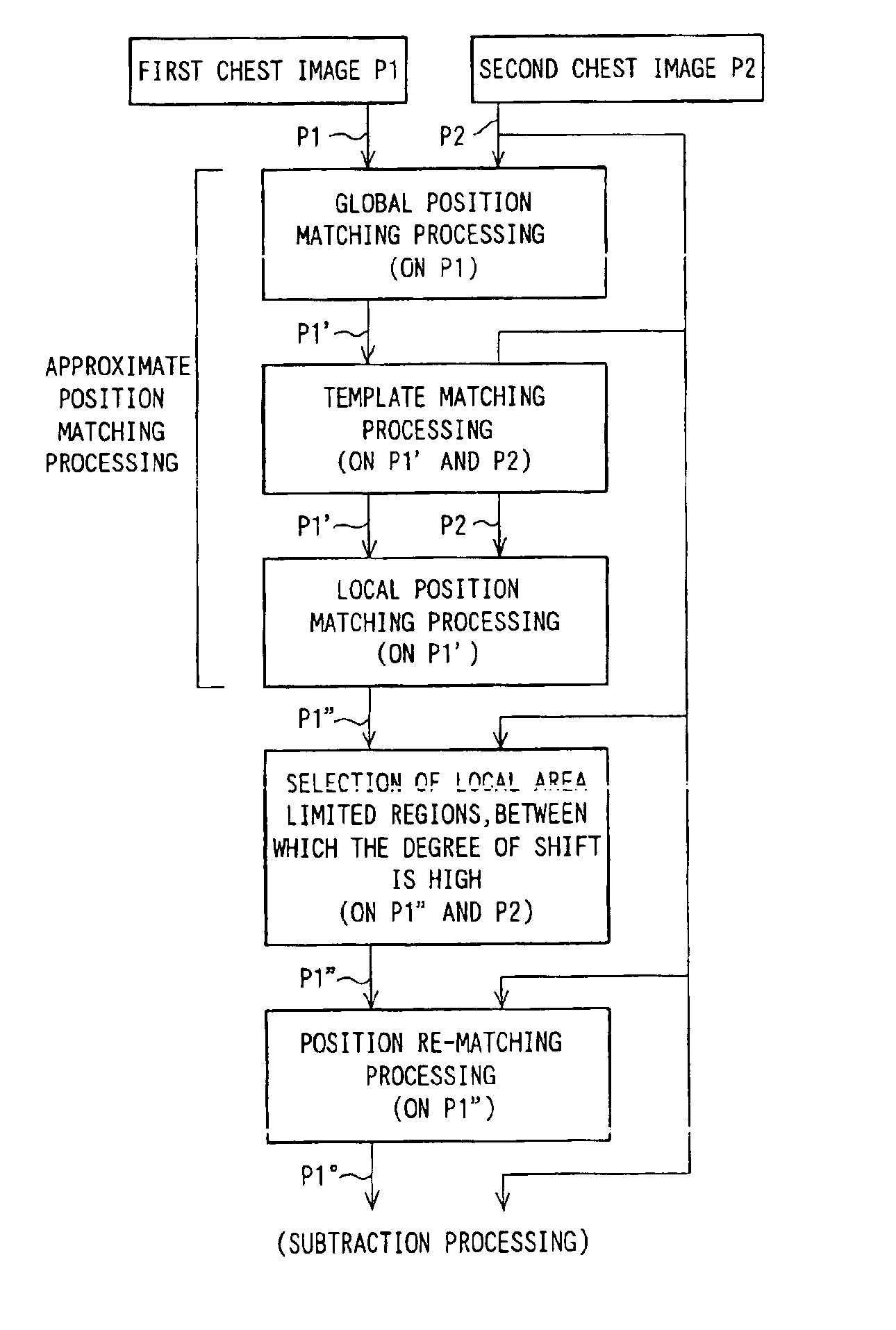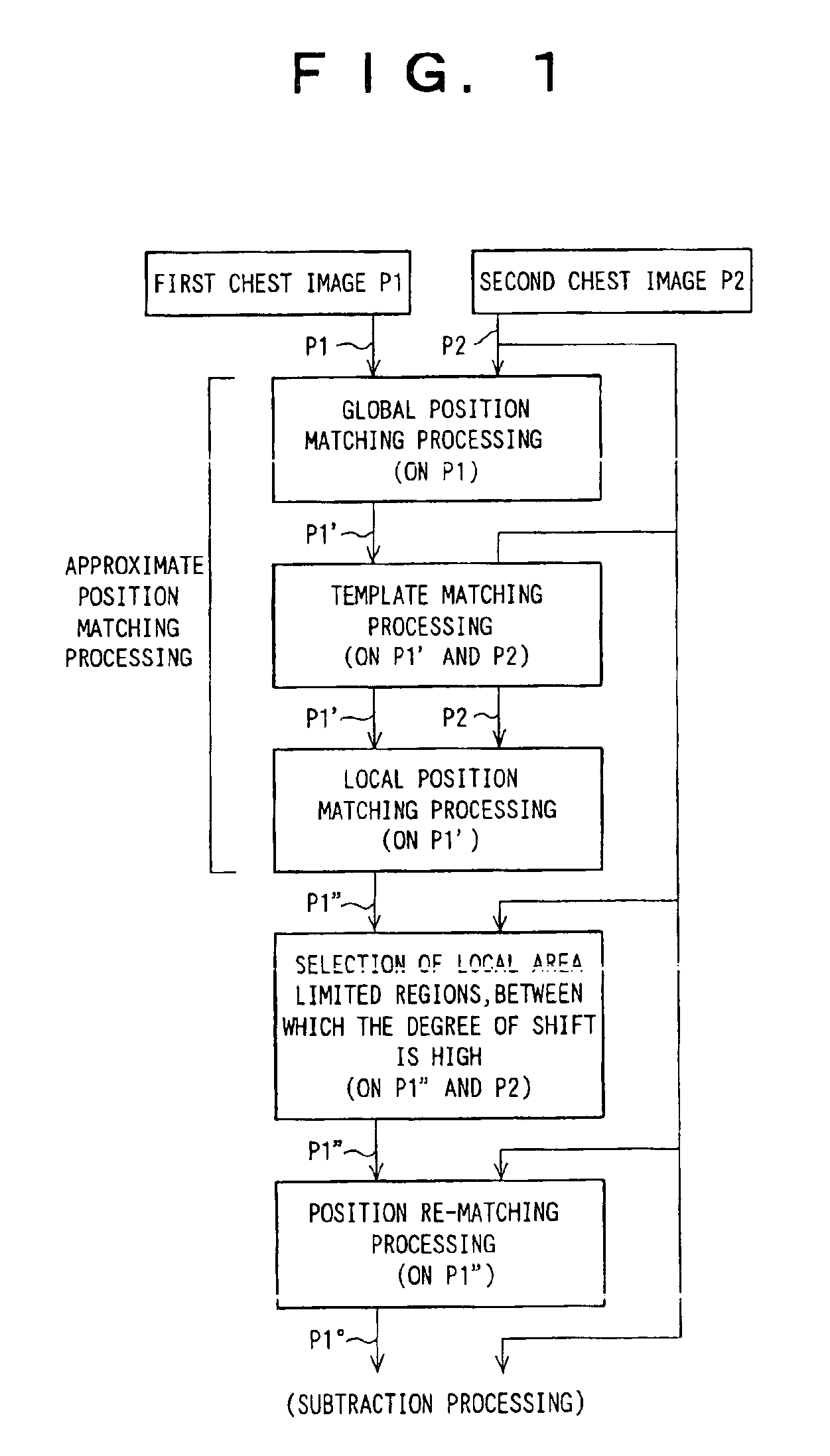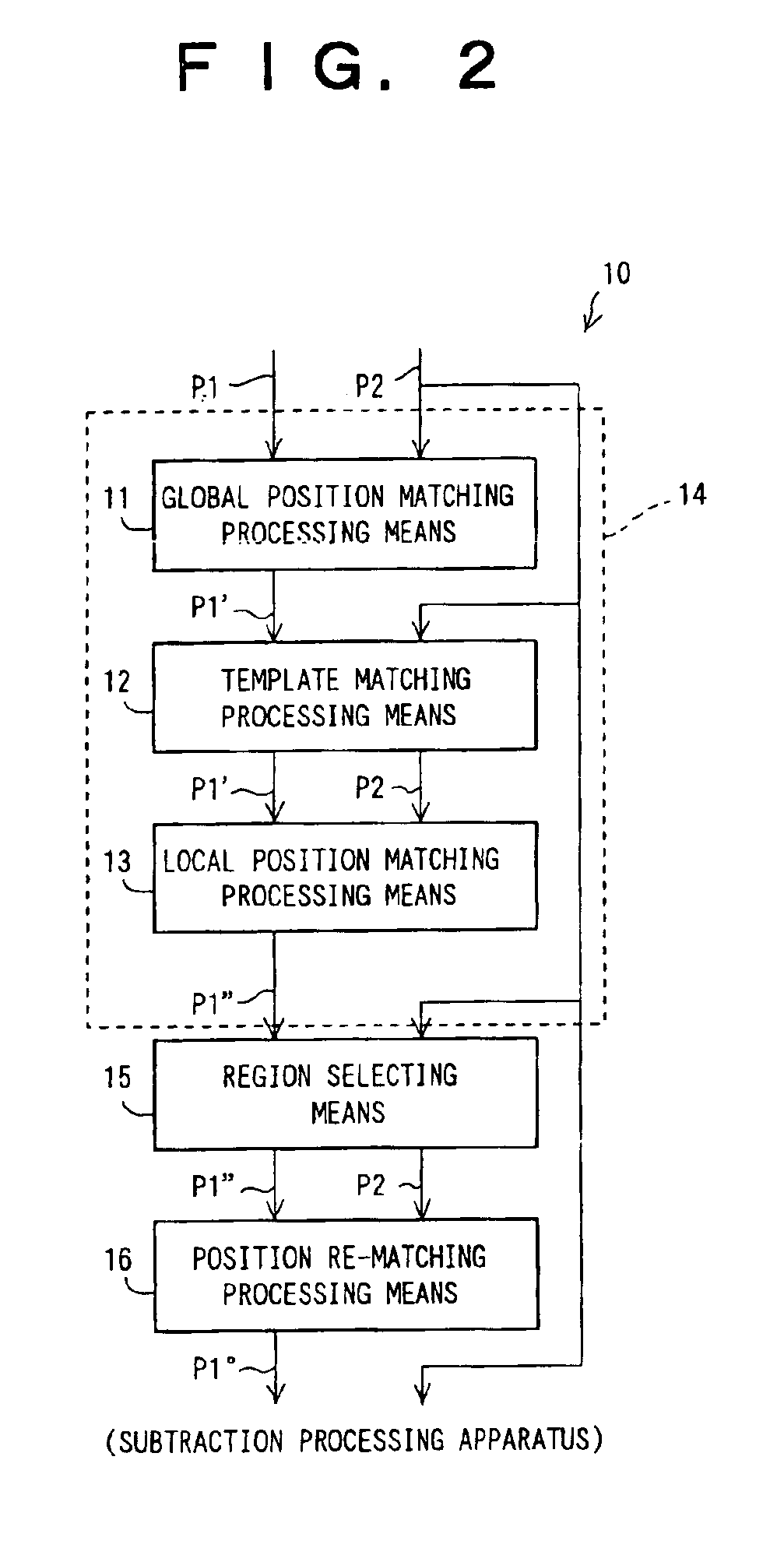Method and apparatus for matching positions of images
a technology of matching position and image, applied in the field of methods and apparatus for matching position of images, can solve the problems of shifting between images, difficult to find the difference in the manner described, and difficult to find the difference between images, so as to achieve the effect of suppressing the shift between two images to be compared with each other and accurately performing position matching
- Summary
- Abstract
- Description
- Claims
- Application Information
AI Technical Summary
Benefits of technology
Problems solved by technology
Method used
Image
Examples
first embodiment
[0095]FIG. 1 is a flow chart showing a processing flow in an embodiment of the method of matching positions of images in accordance with the present invention. FIG. 2 is a block diagram showing the apparatus for matching positions of images in accordance with the present invention, which carries out the processing flow shown in FIG. 1. FIGS. 3A and 3B are schematic views showing two images P1 and P2, whose positions are to be matched with each other by the embodiment of FIG. 2. A first image P1 and a second image P2 are chest images (radiation images) of a single same patient, which images have been recorded at different points of time. The first image P1 is a past image, which has been recorded at a point of time earlier than the recording of the second image P2. The second image P2 is a current image, which is newer than the first image P1. The first image P1 and the second image P2 are the images to be subjected to temporal subtraction processing, wherein a subtraction process is...
second embodiment
[0129]More specifically, as illustrated in FIG. 17, the staged template matching processing means 16a in the second embodiment performs the processing described below.
[0130](1) As for the second image P2 acting as the reference image, with respect to each ROI in the second image P2, the staged template matching processing means 16a sets the first template region TR (one of TR1, TR2, . . . ), which has its center point at the center point having coordinates (x0, y0) in the ROI. By way of example, the first template region TR may have a rectangular shape having a size of 80 pixels (in the vertical direction)×80 pixels (in the horizontal direction). Also, as for the first image P1″, with respect to each ROI in the first image P1″, the staged template matching processing means 16a sets the first search region RR (one of RR1, RR2, . . . ), which has its center point at the same coordinates (x0, y0) as the coordinates of the center point of the first template region TR and is larger than ...
PUM
 Login to View More
Login to View More Abstract
Description
Claims
Application Information
 Login to View More
Login to View More - R&D
- Intellectual Property
- Life Sciences
- Materials
- Tech Scout
- Unparalleled Data Quality
- Higher Quality Content
- 60% Fewer Hallucinations
Browse by: Latest US Patents, China's latest patents, Technical Efficacy Thesaurus, Application Domain, Technology Topic, Popular Technical Reports.
© 2025 PatSnap. All rights reserved.Legal|Privacy policy|Modern Slavery Act Transparency Statement|Sitemap|About US| Contact US: help@patsnap.com



